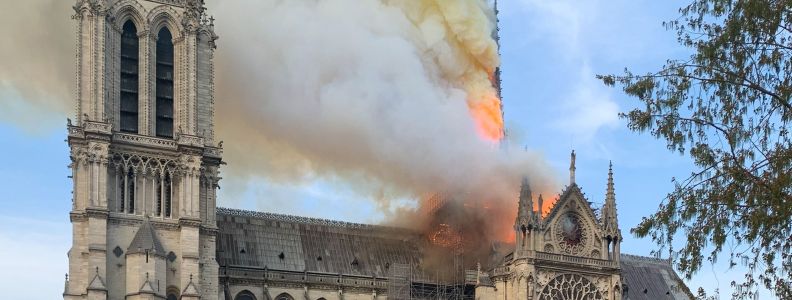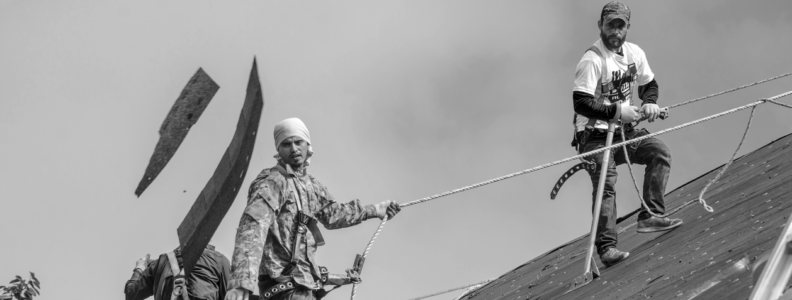Blog

Five Reasons Why You’re Underinsured – A Property Insurance Analysis
Almost no one gets the coverage they think they should get, particularly when it comes to property insurance. As a result, they’re underinsured or simply not insured at all.
Why is this?
That’s because property insurance is complicated. The average policyholder knows what he wants to insure (my building, my tractor, my inventory) and has a general sense of what he wants it insured for (fire, theft, and everything else bad that can happen, I guess), doesn’t want to overpay, and that’s about it.
He generally has no idea what is written on the 26+ pages of policy verbiage or that the policy covers what he thought (or hoped) he was getting.
So what makes property insurance so complex?
I’ll give you five examples.
First – What is and is not considered insurable property
When you get a commercial property policy, generally, you are insuring two categories of property: buildings and business personal property (BPP). Your building is the physical structure and everything permanently attached to it, and your BPP is everything that’s not a part of the building that’s used in the business. For example, if you’re a restaurant, your building is the physical structure and the permanently mounted built in booths and tables, counters, bars, cooking equipment, etc. Your BPP is your pots and pans, food stock, liquor, computers, free standing chairs and tables, eating utensils, decor hanging on the walls, and everything else that’s not permanently a part of the building.
But in these two categories of insurance are lots of things that don’t count as either building or BPP.
Regarding your building, here are some items that are not considered part of the building:
- Underground pipes, flues, and drains
- Foundations or any structures or machinery that are below the surface of the ground.
- Detached retaining walls, fences, signs, antennas
- Land, water, crops, lawns, trees, shrubs, and plants
Regarding your BPP, not included is;
- Accounts, bills or any other type of money or currency
- Electronic data, valuable papers or records
- Animals (sorry farms)
- Contraband or property in the course of illegal transport or trade (sorry Californians)
And this is just a partial list.
I guess this is not a big deal until that pesky pine tree sends a root into your drain pipe and breaks up the patio, knocks your sign over into the electrical panel, creating an electrical surge that fries your server deleting all your data. The good news is that you can add many of these items back in to be insured (except for the contraband, again, all apologies, Californians) buuuuuut…. it may increase the bottom line premium a little.
Second – Perils
What 18th century term are we using here? Perils are the bad things that happen that directly cause damage to your property. Fire, theft, wind – these are all examples of perils. Even if you have “Special Form” coverage – which is the best type of coverage you can get – it doesn’t cover every peril that could possibly occur, because it has EXCLUSIONS, about 30 of them.
I won’t get into all of the exclusion, but these are some big ones:
- Flood
- Earthquake
- Wear and tear
- Government action – like when they tell you you have to demo your building and sell them your property because they want to build a freeway in its place
- Artificially generated electrical energy
- Theft by an employee
You will be happy to know that there are lots of ways to fill in these gaps, but it will cost you a modest sum.
Third – Location
Your insurance will only cover your property at a specific geographical location. There are physical boundaries to where your policy covers your stuff. Of course, this is probably not a big deal if you’re insuring your building which is unlikely to leave the premise. But what about your BPP? The standard policy limits coverage to the listed location on the policy or within 100 feet of it. A lot of policies have expanded that circumference to 1000 feet.
If you have portable tools and equipment, that might be a problem. On April 15, 2019, Notre Dame Cathedral caught on fire while in renovation. Question: if you were one of those contractors working there and lost your tools and equipment in the fire, would it have been covered? Answer: Unless your insured location was 100 feet from the cathedral itself, no, your burned tools would not have been covered.
There are fixes to this problem which might cost a few dollars. One such fix is called “Inland Marine” which is another topic for another day.
Fourth – Coinsurance
This is a penalty that applies to all claims if your item-to-be-insured is underinsured. Let’s say your building would cost $1,000,000 to rebuild if it burned to the ground, but you only had bought insurance to pay up to $750,000. You are 25% underinsured. Depending on your Coinsurance percentage (which I won’t get into here because I’m sticking with the big picture), you’re going to get a penalized payment, most likely between 7-25% reduced on a claim of any size. You may think you’re only risking an insurance issue on any claim that goes beyond $750,000, but sadly, you are misinformed. Coinsurance applies at all times, kind of like the speed limit or taxes. Another way to phrase this concept is underinsurance is a problem because of the Coinsurance Condition which short-changes every single claim payment, even small ones. I would bet big money that the Coinsurance penalty is on your policy, that is unless you paid more to get rid of it… which I doubt.
Fifth – Business Income and Extra Expense
This coverage got really popular during the COVID lockdowns, mainly because it wasn’t covered. Even if you had BIEE on your policy and no virus or government action exclusions, the reason why there was no coverage for COVID shutdown is because there was no covered property damage which must occur for BIEE to take effect. Anyway, there is no coverage for loss of income or the extra expenses required to keep your business going during the period of restoration unless you bought that coverage.
BIEE is an optional coverage. Often, luckily, it is automatically included on a package policy, but it may not be. It can be a separate standalone policy with its own contract, conditions, and definitions. It is wild how much editing you can do on a BIEE policy. You can have coverage that will cover you for about 10 minutes of lost income, or it could hold you up for years. Or you could have none. If you want it, you can generally get it, but you will need to pay for it.
Conclusion
There you go: five quick reasons why property insurance is complex and why you’re probably underinsured. If you merely look at the first page of your policy (aka, the declarations) you’re likely unaware of any gaps or shortcomings. The good news is, however, many of these coverage gaps can be filled. And although I acted like it’s super expensive to do so, it’s really not. It can be done – give me a call with any questions.
 ELI GILLESPIE
ELI GILLESPIE
I’m the commercial producer and owner at Gillespie Insurance Services.
SCHEDULE A CALL
SEND EMAIL




